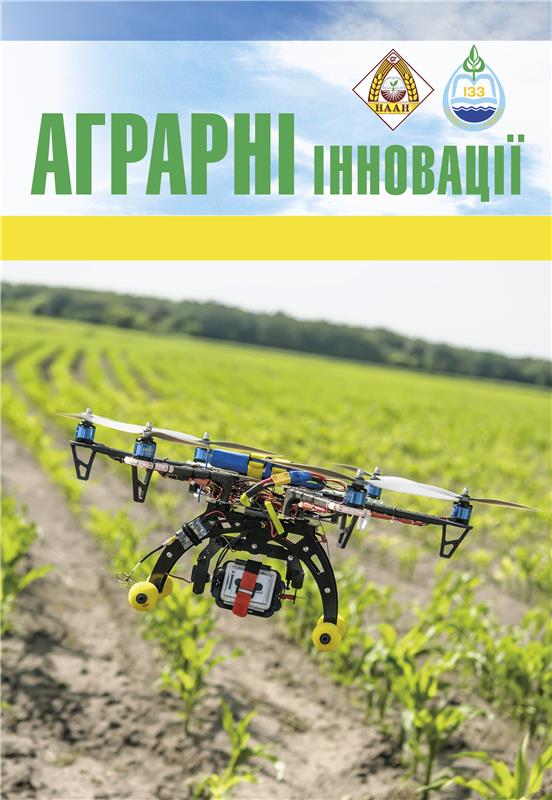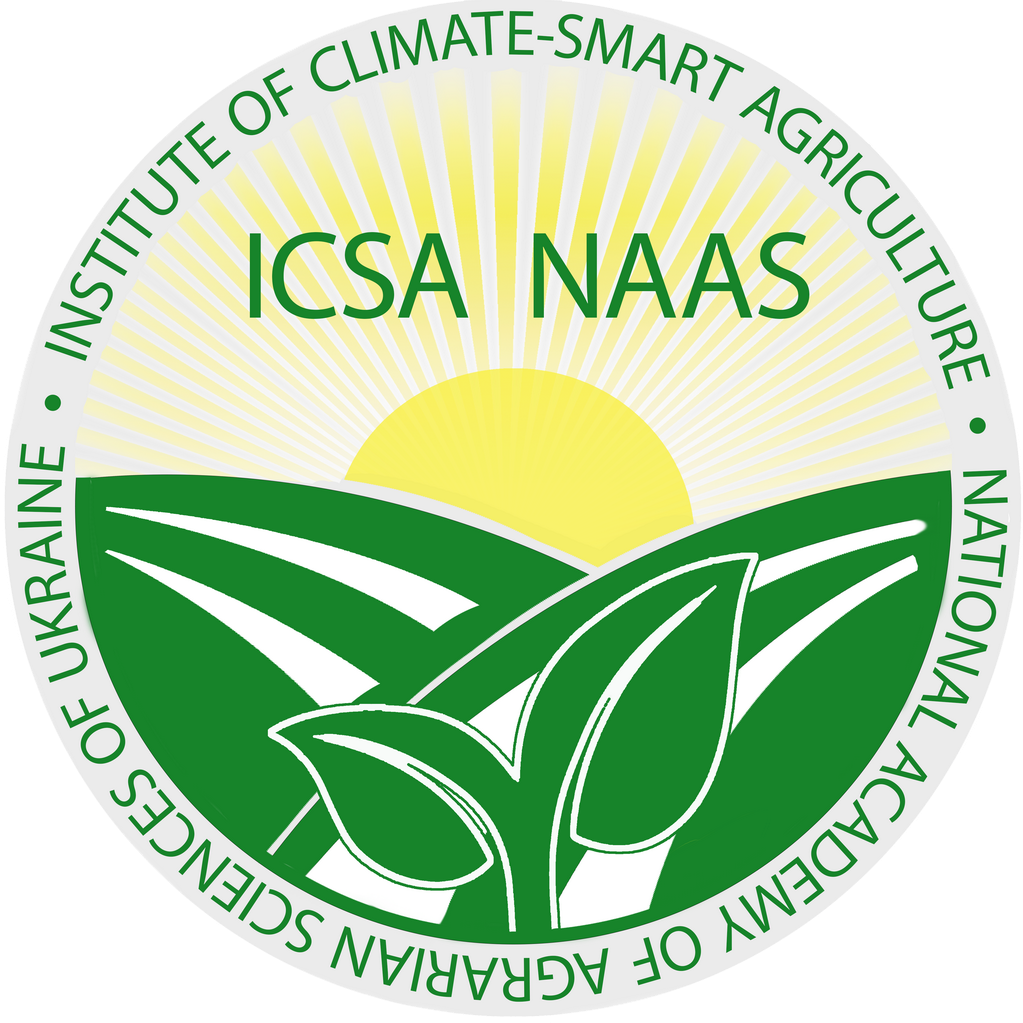ANALYSIS OF THE CURRENT STATE AND PROSPECTS FOR OIL FLAX CULTIVATION: UKRAINE IN THE CONTEXT OF GLOBAL CHANGES
Abstract
The purpose of the study is to summarize the changes in the structure of oil flax production in leading countries worldwide, to identify regional characteristics of the dynamics of cultivated areas and yields, and to analyze the factors that determine these processes, considering climatic, economic, and technological conditions. Particular attention is paid to the situation in Ukraine, which, despite unstable dynamics, demonstrates growing production potential for this crop. Methodology. The article presents a comprehensive analysis of current trends in oil flax production at both global and national levels during the period from 2000 to 2023. Results. The article presents FAOSTAT data illustrating the fluctuations in global oil flax cultivation areas, from 2.58 million hectares in 2000 to 4.53 million hectares in 2022, followed by a decrease in 2023. A regional breakdown shows that the most significant growth occurred in Europe, where the sown area increased more than fivefold over the past decade. Kazakhstan also showed considerable expansion, while Canada, China, and the United States displayed declines or fluctuations in cultivation areas. Ukraine is characterized by unstable dynamics but with a positive trend toward increased sowing and gross harvests in 2022–2023. Regarding yield indicators, the article emphasizes the variation from 0.35–0.70 t/ha (India) to over 2 t/ha (USA). The global average yield in 2023 was 0.84 t/ha. The highest yields were observed in countries with advanced agro-technological infrastructure, such as the USA, Canada, and European nations. In Ukraine, yields have significantly improved over the past 20 years, from 0.25 t/ha in the early 2000s to 1.13 t/ha in 2023, with a peak of 1.53 t/ha in 2021. This growth is attributed to the introduction of new varieties, improved agricultural practices, and growing interest in organic production. Conclusions. The article concludes that oil flax has considerable agronomic and economic potential and plays a significant role in sustainable farming systems. Its production requires adaptation to climate change, implementation of precision agriculture, improvement of varietal policies, and development of processing infrastructure. For Ukraine, oil flax is a promising crop for both conventional and organic production systems, opening new opportunities for export expansion and meeting domestic demand.
References
2. IPCC. Climate Change 2021: The Physical Science Basis. Summary for Policymakers. 2021. URL: https://www. ipcc.ch/report/ar6/wg1/ (дата звернення: 24.07.2024).
3. Flax fiber and its composites: An overview of water and moisture absorption impact on their performance / Moudood A., Rahman A., Öchsner A., Islam M., Francucci G. Journal of Reinforced Plastics and Composites. 2019. № 38(7). С. 323-339. https:// doi.org/10.1177/0731684418818893
4. Heller K., Byczyńska M. The impact of environmental factors and applied agronomy on quantitative and qualitative traits of flax fiber. Journal of natural fibers. 2015. № 12(1). С. 26-38. https://doi.org/10.1080/15440 478.2013.879088
5. Гамаюнова В. В., Задирко Р. В. Вплив обробки насіння та ресурсоощадного живлення на водоспоживання льону олійного в умовах Південного Степу України. Аграрні інновації. 2023. № 22. С. 186–192. https://doi.org/10.32848/agrar.innov.2023.22.29.
6. Товстановська Т. Г., Полякова І. О. Агробіологічні особливості вирощування льону олійного в Україні. Агроном. 2007. № 1(15). С. 156-157
7. Рудік О. Л. Формування урожаю льону олійного залежно від терміну посіву та норми висіву в зоні сухого Степу України. Таврійський науковий вісник. 2016. № 95. С. 79-86.
8. Рудік О. Л., Онуфран Л. І. Ресурсоощадні технології вирощування льону олійного в системі адаптації до кліматичних змін зони недостатнього зволоження. Chapter 11. Publishing House “Baltija Publishing”, 2021. https://doi.org/10.30525/978-9934-26-389-7-11
9. Вожегова Р., Боровик В., Коновалова В. Урожайність і якість насіння сортів льону олійного в Південному Степу України залежно від різних умов вирощування. Вісник аграрної науки. 2020. № 3. Том 98. С. 82–87. https://doi.org/10.31073/agrovisnyk202003-12
10. Чехова І. Світові тенденції розвитку ринку олійних культур. Економічний дискурс. 2020. Вип. 3. С. 54–62. https://doi.org/10.36742/2410-0919-2020-3-6
11. Flaxseed as a source of functional ingredients / Rubilar M., Gutiérrez C., Verdugo M., Shene C., Sineiro J. Journal of Soil Science and Plant Nutrition. 2010. 10(3). Р. 373–377. DOI:10.4067/S0718-95162010000100010
12. Насіння льону як рецептурний компонент хлібобулочних виробів / Бондаренко Ю. В., Білик О. А., Кочубей- Литвиненко О. В., Андронович Г. М. Наукові праці Національного університету харчових технологій. 2020. № 26(4). С. 178-189. DOI:10.24263/2225-2924-2020-26-4- 20
13. Онопрієнко О. В., Онопрієнко О. М. Інновації у харчових технологіях. Інтеграційні та інноваційні напрями розвитку харчової індустрії : матеріали VІ Міжнар. наук.-практ. конф., (м. Черкаси, 3–4 листопада 2022 р.). Черкаси :ЧДТУ, 2022. С. 138–142.
14. Горач О. О. Інноваційні напрями використання насіння льону олійного та екологічна безпека харчової продукції. Формування нової парадигми розвитку агропромислового сектору в XXI столітті : колективна монографія. Львів-Торунь : Ліга-Прес, 2021. Ч. 2. С. 593–620.
15. Flax and flaxseed oil: an ancient medicine & modern functional food / Goyal A., Sharma V., Upadhyay N., Gill S., Sihag M. Journal of Food Science and Technology. 2014. 51(9). Р. 1633–1653. https://doi.org/10.1007/ s13197-013-1247-9
16. Алієв Е. Б., Алієва О. Ю., Малєгін Р. Д. Техніко- технологічне забезпечення комплексної безвідходної переробки рослинної сировини олійних культур у корми для органічного тваринництва. Наукові горизонти. 2020. № 7(92). С. 112–119. https://doi. org/10.33249/2663-2144-2020-92-7-112-119.
17. Дяченко Л. С., Бомко В. С., Сивик Т. Л. Основи технології комбікормового виробництва: навч. посібник. Біла Церква, 2015. 306 с.
18. Шепель А. В., Чернишова Є. О. Льон олійний як попередник круп’яних культур у проміжних посівах в умовах півдня України. Таврійський науковий вісник. 2012. № 80. С. 166-170.
19. Льон олійний, гірчиця. Стратегія виробництва олійної сировини в Україні (малопоширені культури) : монографія / І. А. Шевченко, В. О. Лях, О. І. Поляков, А. І. Сорока, К. В. Ведмедєва, В. М. Журавель, Ю. О. Махно, Т. Г. Товстановська, Г. І. Буділка ; Інститут олійних культур Національної академії аграрних наук України. Запоріжжія : СТАТУС, 2017. 44 с.
20. Полякова І. О., Товстяновська Т. Г. Агробіологічні особливості вирощування льону олійного в Україні. Агроном. 2007. № 1. С. 156–157.
21. Прокопенко Е. В., Прокопенко Н. А. Агроекологічні особливості росту льону олійного. The 12th International scientific and practical conference “Modern research in science and education”, (July 25-27, 2024). BoScience Publisher, Chicago, USA, 2024. С. 8-12.
22. Сівозміна як захід ресурсозаощадження та екологічної рівноваги південного регіону України в повоєнний період / Гамаюнова В. В., Хоненко Л. Г., Бакланова Т. В., Пилипенко Т. В. Climate-smart agriculture: science and practice : Scientific monograph. Riga, Latvia : Baltija Publishing, 2023. С. 361–394.






